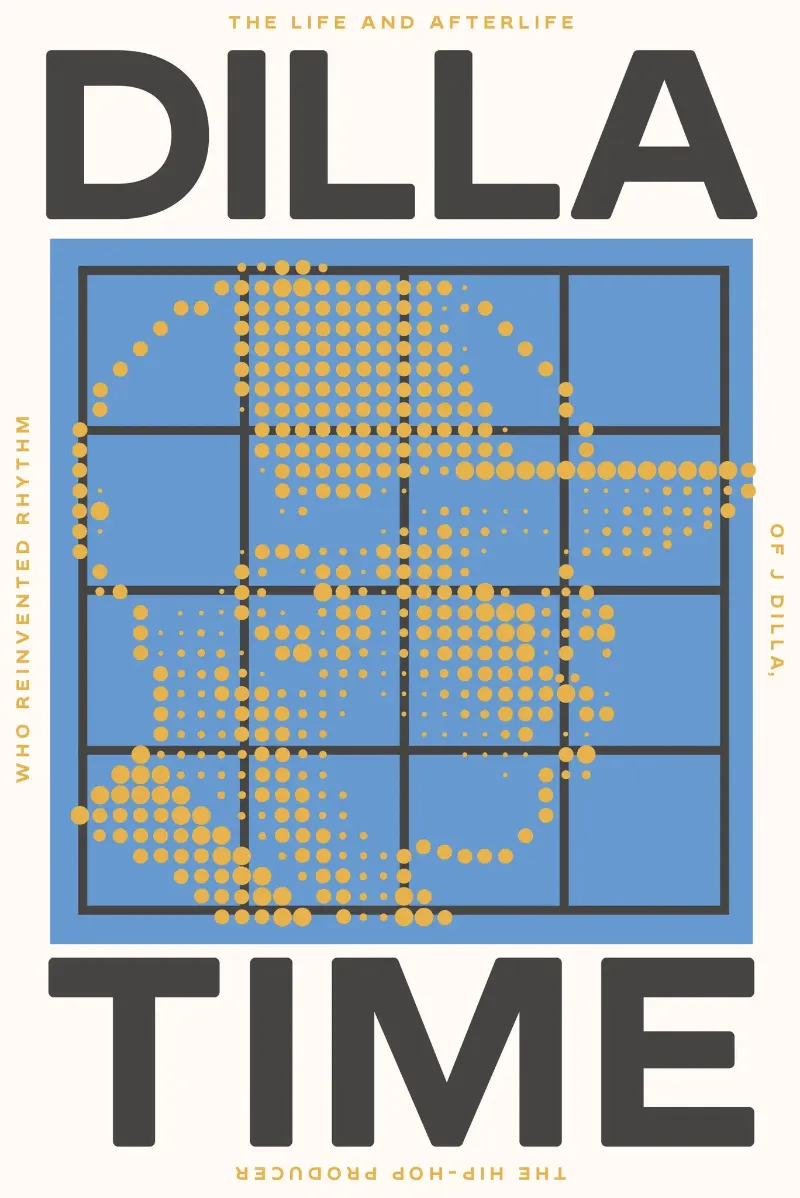Dilla Time

— Non-fiction is at its best when you learn unexpected things. In a book about a hip-hop producer you’d expect to read about colonialism and segregation but not necessarily about city planning or the economic decline of a city.
These inter-connected topics define the environment for James Dewitt Yancey growing up in Detroit to become one of the most prolific rap-music producers. Going by his stage name J Dilla, he is the mind behind classic rap tunes such as De La Soul’s “Stakes Is High”, Common’s “The Light”, or The Pharcyde’s “Running”.
J Dilla invented a new sound that would not only define the sound of Hip Hop going forward but also find its way into RnB, Jazz, and even pop music. Before J Dilla, there were two ways of musical timing: straight time, where the rhythmic pulse is divided equally and swing time where the pulse is “divided unequally, such that certain subdivisions (typically either eighth note or sixteenth note subdivisions) alternate between long and short durations”. J Dilla combined both these styles; he layered, stretched and compressed them to create a new rhythmic feels. The resulting sound is unexpected, a little off, and very different to the style du jour during the boom bap era—but also more intriguing. Most of the Hip Hop music I fancy today uses J Dilla’s rhythmic feel.
Soon big names started emulating Dilla’s production. Questlove wanted to play he drums like Dilla. D’Angelo wanted his album, though recorded with a live band, to sound like it came from J Dilla’s MPC. Pharell Williams and Kanye West cite him as influences. And yet, despite all of the industry recognition, J Dilla never had a commercial successful pop hit. The closest he came was probably Janet Jackson’s “Got ‘Til It’s Gone.” N’Sync, yes, the boyband, enquired about a remix that could have led to a lucrative contracts, but J Dilla turned them down. Instead Timbaland went on to remix N’Sync, to later produce Justin Timberlake and subsequently built a career by pulling faces in music videos.
Based on hundreds of interviews with Dilla’s contemporaries, Dilla Time sheds a light on the musical theory of his sound and how it inspired plenty musicians that came after him. But it also paints the complete picture of a conflicted man: Dilla almost exclusively worked with artists know for their soulful music, spreading messages of love and empowerment. But privately, he loved simple things, money, fancy clothes and going to the strip club. J Dilla had a temper he often took out on the people closest to him. He fathered two children with two women and apparently paid for several abortions.
Dan Charnas wrote a lovingly crafted homage to J Dilla that puts a man at the centre who often worked in the background and rarely got the recognition he deserved when he was still alive.
Dilla Time: The Life and Afterlife of J Dilla, the Hip-Hop Producer Who Reinvented Rhythm (2022). Farrar Straus Giroux. 480 pages.